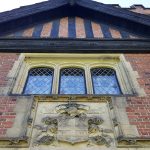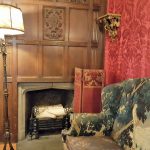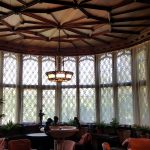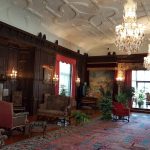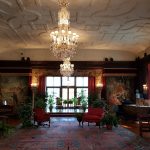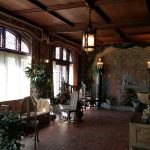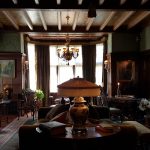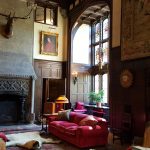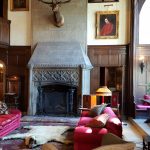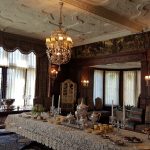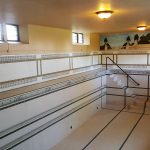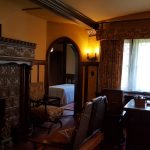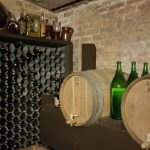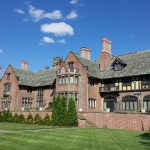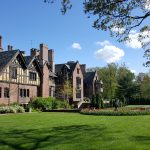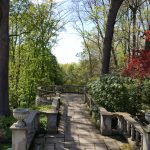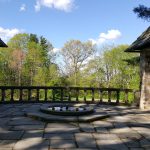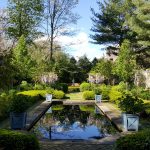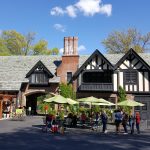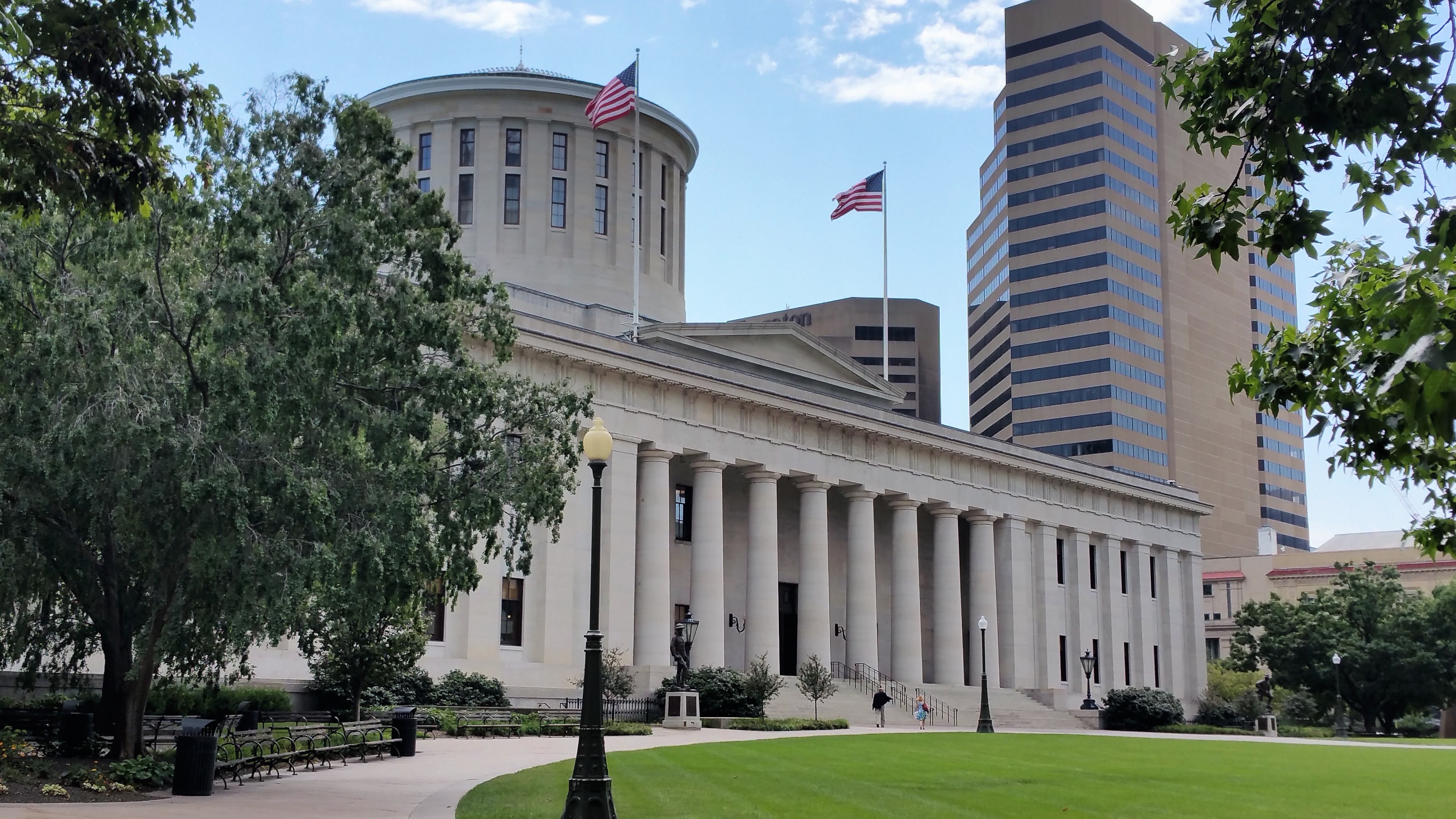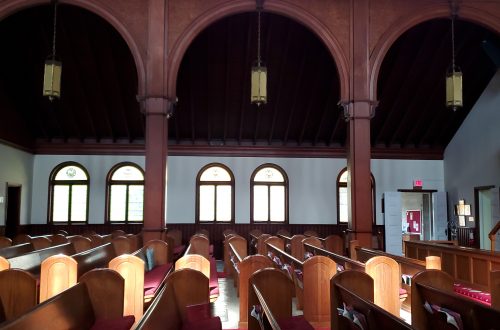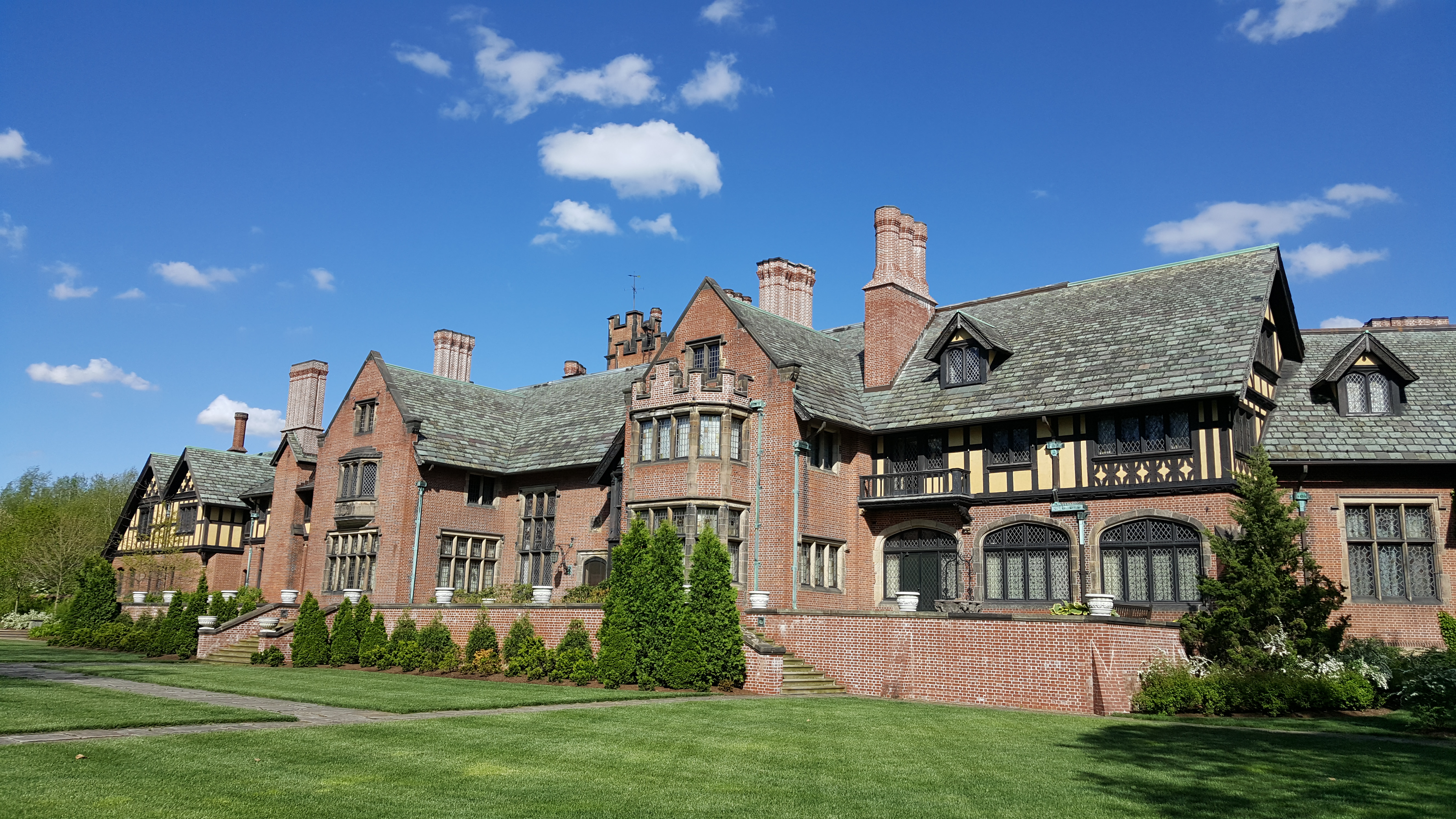
Stan Hywet- Akron, OH
Stan Hywet may just be the most fabulous house I have ever visited. It is not just large, or ridiculously ornate; it is of course both of those things, but it embodies so much more. It is a beautifully designed Manor House, full of unexpected details. Beyond breathtaking, the house and gardens are an absolute pleasure to explore.
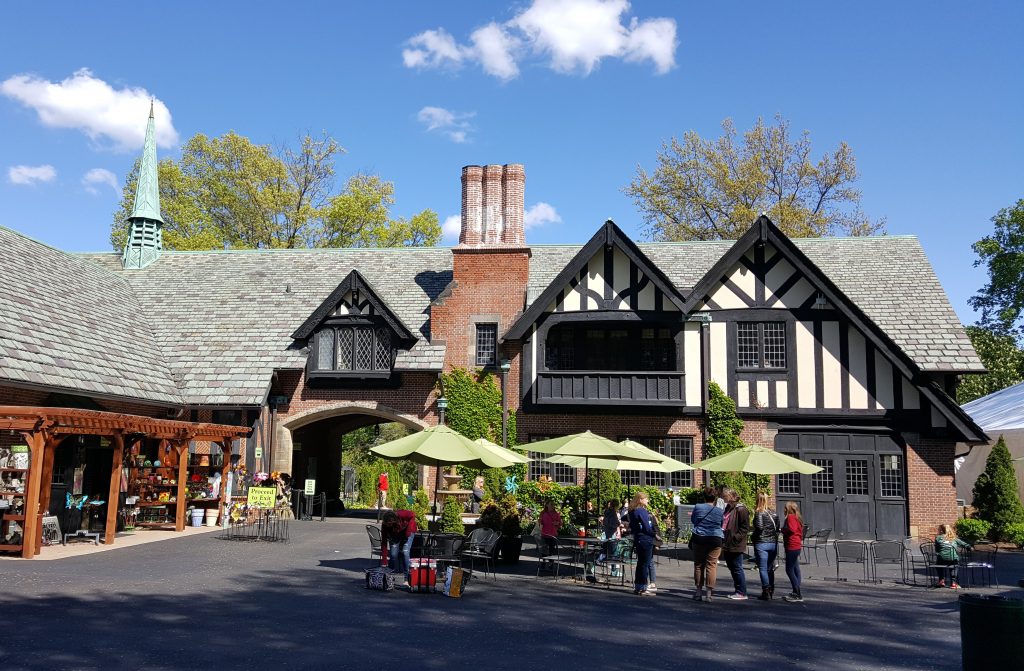
Stan Hywet was built for Franklin Seiberling, co-founder of The Goodyear Tire & Rubber Company. Interesting aside, the company was named after Charles Goodyear, a chemist who died penniless decades earlier, despite having patented the method to vulcanize rubber. Fortunately things worked out better for Seiberling. He revolutionized the tire industry in just a few short years, fortuitously just as car ownership exploded across the country. Innovations such as the first universal tire rim and all weather tread made Seiberling a wildly wealthy man.
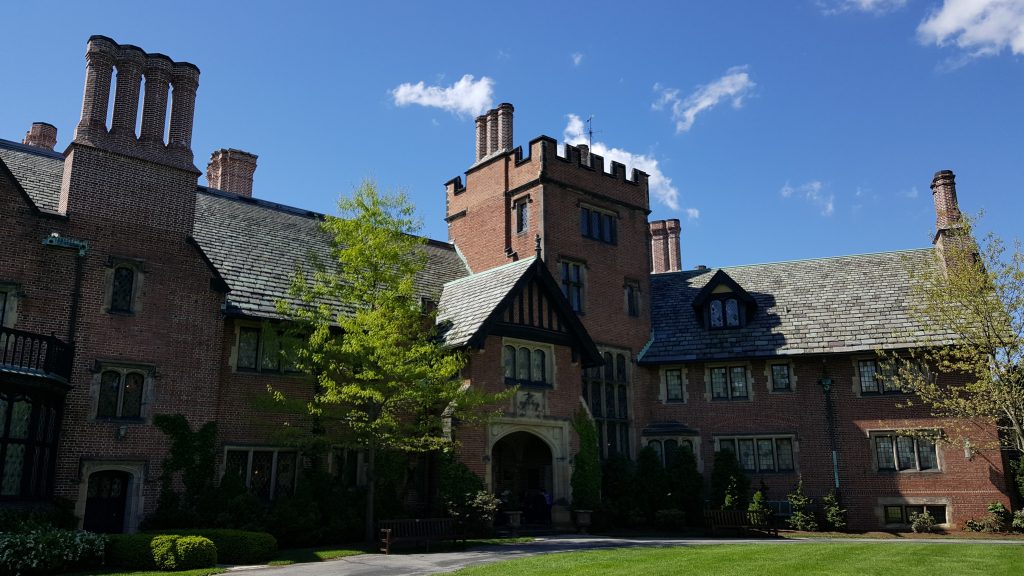
Indeed, by the turn of the century, the rubber industry transformed Akron into a thriving boomtown. As the city filled with manufacturing facilities, the captains of industry fled to the clean air of the nearby countryside, away from the pollution they were creating. As such, in 1911, Frank Seiberling hired Cleveland Architect Charles S. Schneider to design his very own 65 room Tudor Revival retreat. At 64,500 feet, the home required its own railroad spur to deliver the building materials.
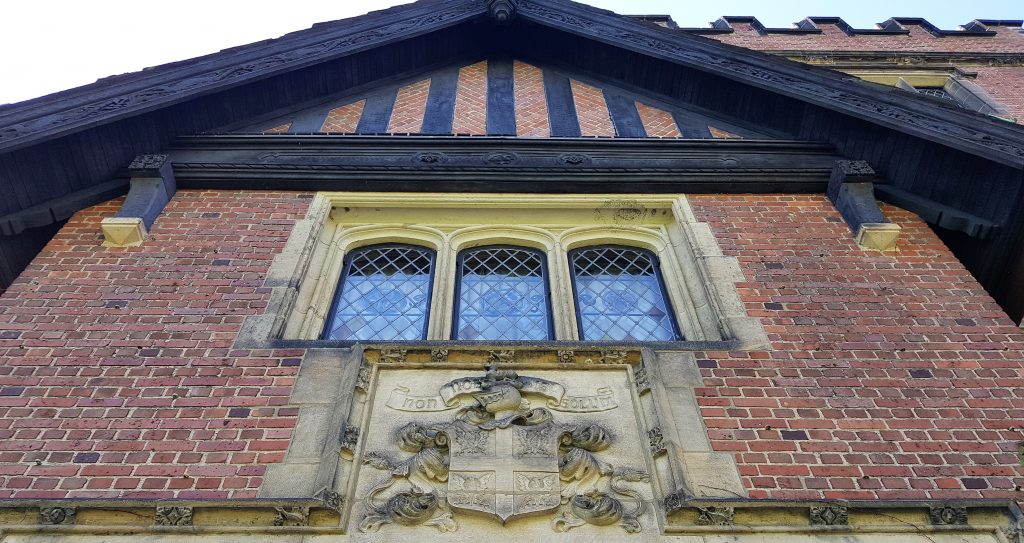
With a seemingly unlimited budget, Schneider proceeded to build one the finest examples of Tudor Revival architecture in all the land. Replete with a crenelated tower, portcullis style door, stacked chimneys, half timbering and coat of arms, the baronial home perfectly captures the look of a grand English estate. Fittingly, the home was given an Old English name, Stan Hywet, which loosely translates to ‘stone quarry,’ a reference to an earlier use of the estate land.
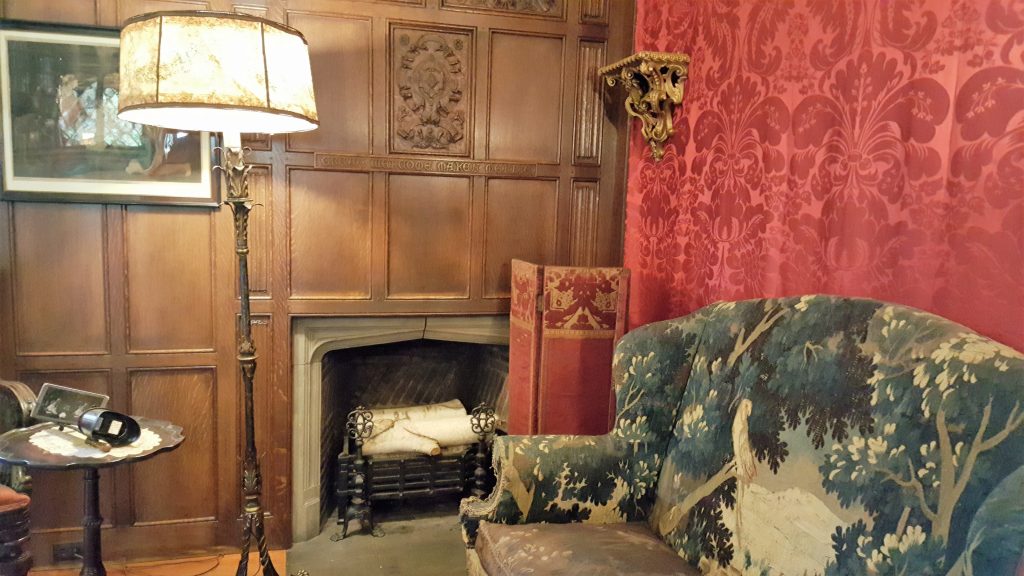
In 1911, the Seiberling’s, along with their architect, visited over 20 English manor homes for inspiration. Groundbreaking on the grand estate took place in late 1912, with a small army of builders and designers constructing the finest house money could buy. Costing an estimated $4 million ($49.5 million today), no expense was spared. Architectural salvage was imported from English estates; oak panels were hand carved to resemble fabric folds. An indoor swimming pool was constructed, requiring blasting of bedrock.
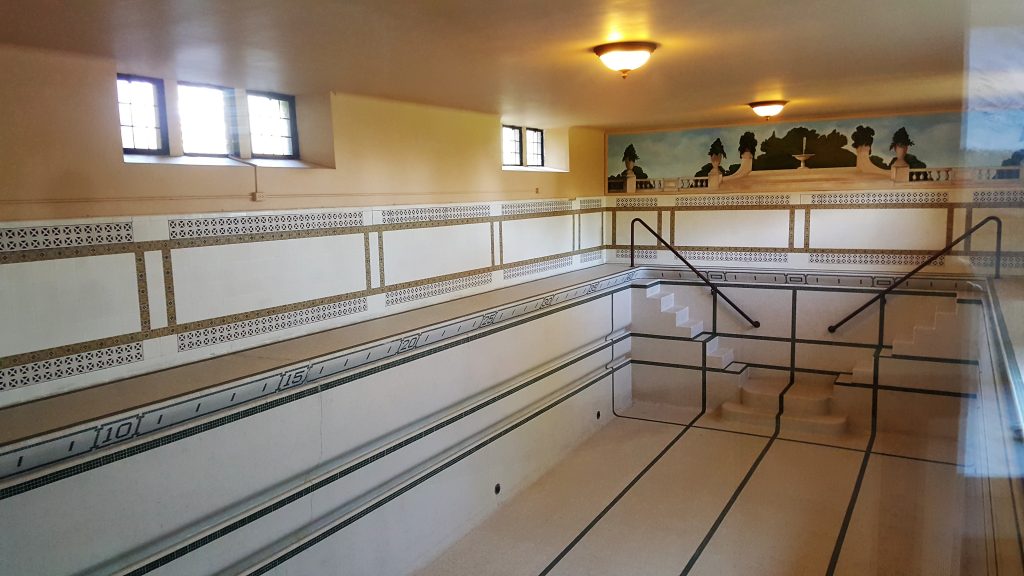
One of the grandest spaces in the house is the Music Room. Consisting of an entire wing, the 2700 square foot room contains an Aeolian organ with 2433 pipes, as well as a harpsicord once owned by Handel and played by Haydn. It is where the Seiberling’s entertained, and it was built to impress. And it most certainly does. Spectacular chandeliers cast shadows around the room, illuminating the intricate plaster ceiling. Priceless tapestries hang on the wall, handmade carpets adorn the floor.
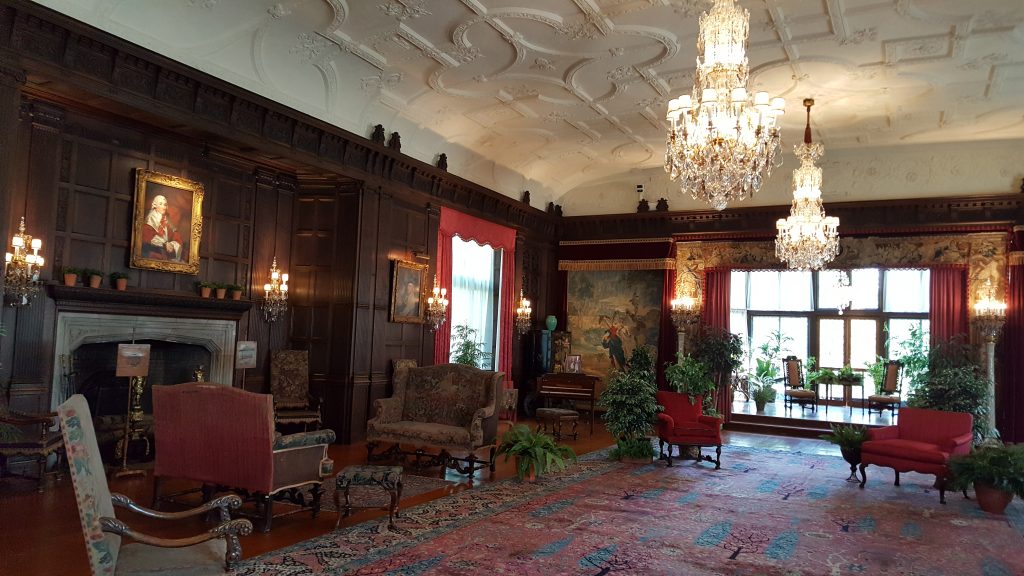
In addition to an elevated stage at the far end of the room, there was also a balcony from which musicians could perform. A third floor dormitory housed visiting performers, including entire orchestras, and several von Trapp siblings, who preferred to sleep in the same room.
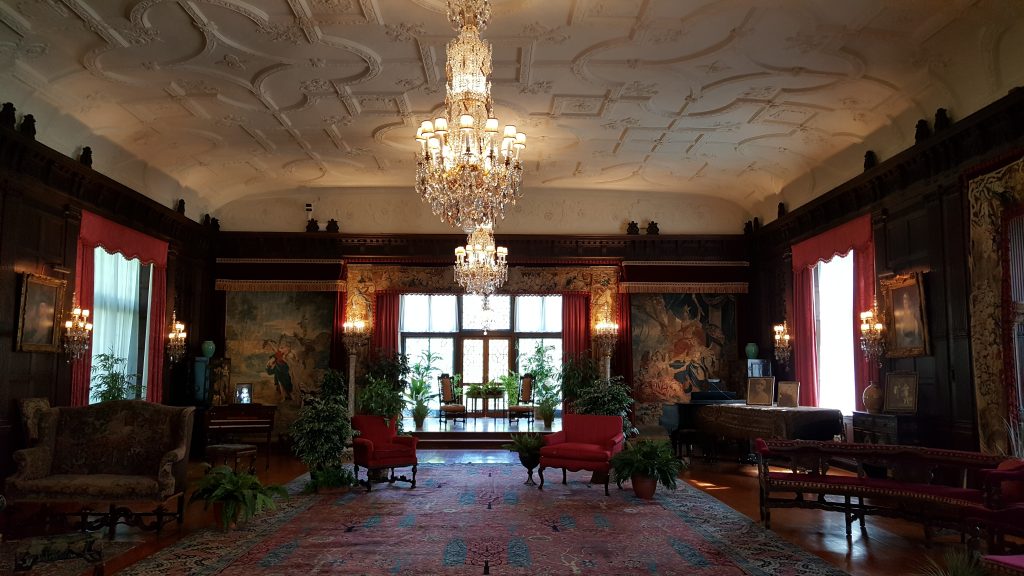
Just off the Music Room is a lovely enclosed porch, used as a sun parlor. With its tiled floor and fountain, it was designed to bring the outside indoors. While it may be called a porch, it is as polished and elegant as the rest of the house.
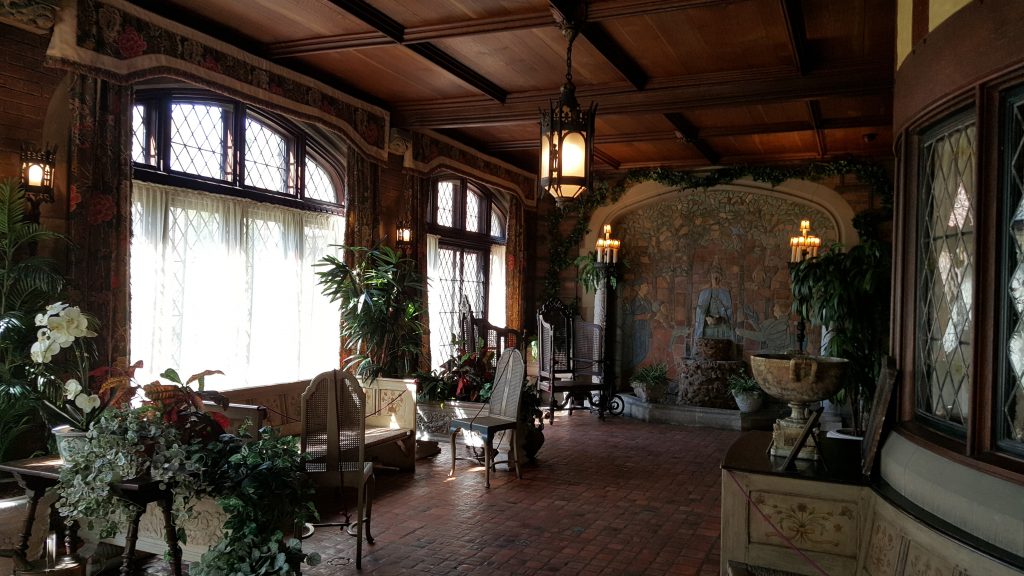
The Library off the porch is a bibliophile’s dream. With its black walnut paneling, and hand painted ceiling panels, it would be the perfect place to settle down with a cup of coffee and a good book. A rainy day and a glass of whiskey would also work. It even has a secret passageway, if you need beat a hasty retreat, or escape from a zombie.
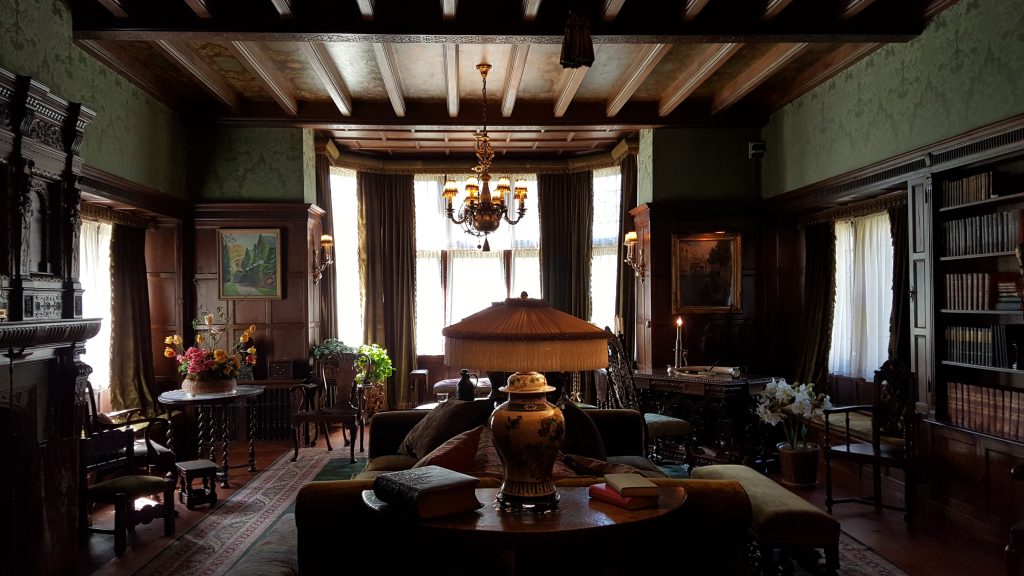
If the Library has not already left you feeling like you are in the movie Clue, you will be transported there when you enter the Great Hall. Three stories high, and centered by a massive sandstone fireplace, this space looks equally great viewed from the first floor or one of the balconies above. Decorated with taxidermy, tapestries, and dark wood, it is a very masculine space. It is exactly the kind of room you would expect to find in a Manor House.
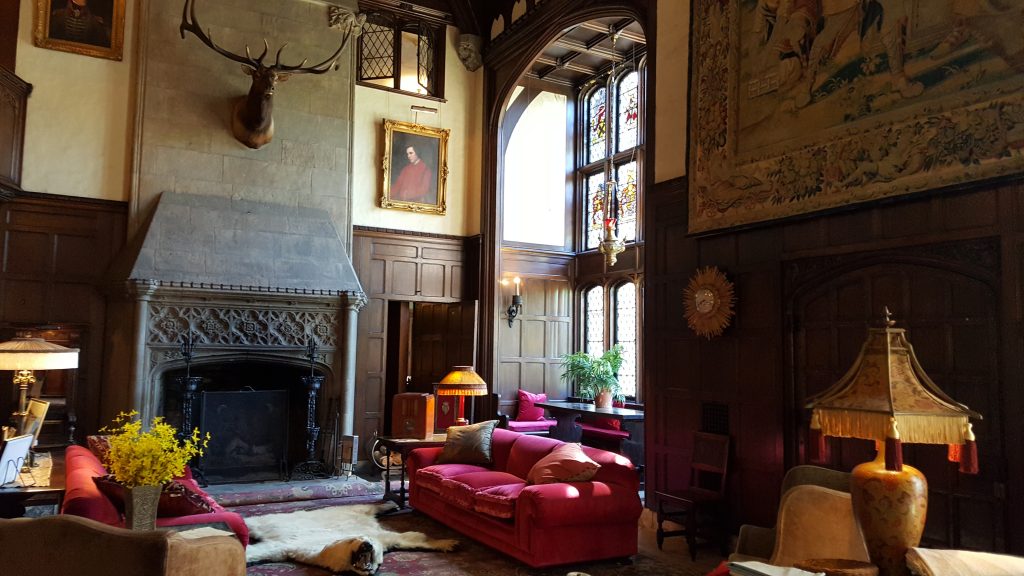
Just off the Great Hall is the opulent Dining Room, clearly designed with elite entertaining in mind. Centered by an elegant crystal chandelier, the massive table could seat up to 40 comfortably. A canvas frieze painted by Robert Sewell runs along the upper perimeter of the room, illustrating Chaucer’s Canterbury Pilgrimage. How very English.
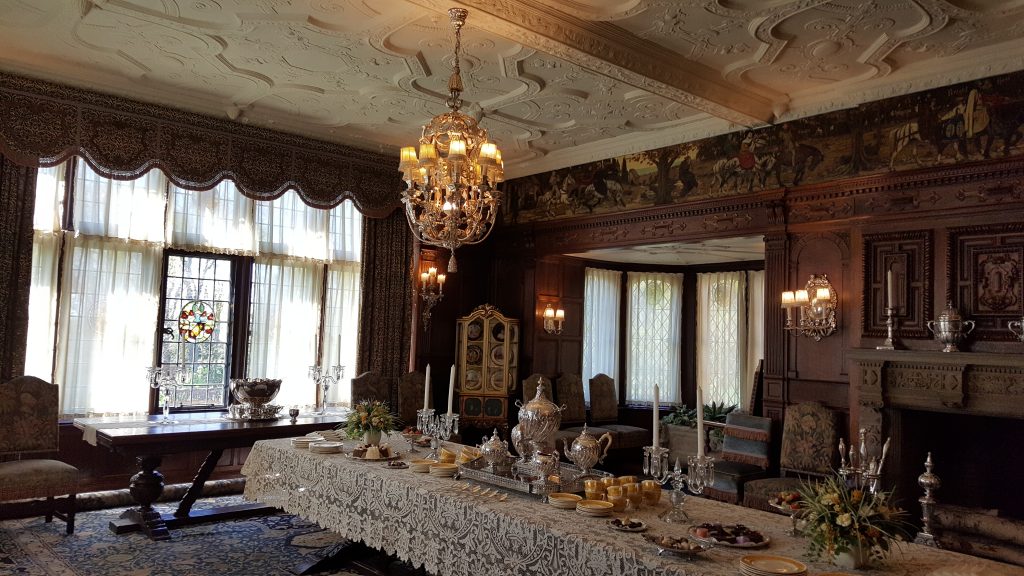
Upstairs, there are a ridiculous amount of bedrooms; eighteen in fact, for family, guests, and staff. That is not even including the third floor dormitory. There are also bathrooms, dressing rooms, sleeping porches, linen rooms and a morning room. They are all magnificent, but it’s a bit overwhelming. A warren of impressive rooms. The master suite even has an interior window salvaged from a 17th century English manor, which looks down upon the Great Hall. It is appropriately called the Chaperone’s Window.
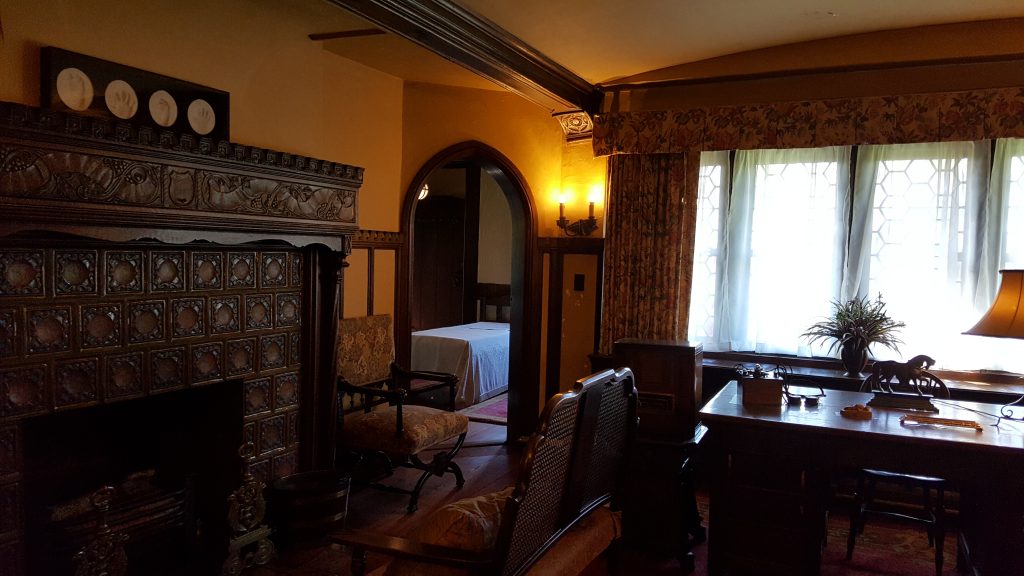
If you go on the Nooks and Crannies tour, there are yet more rooms to visit in the tower, including the infirmary. Here, in a sterile white room, the sick were quarantined; several family members also used this space as a birthing suite. Isolated from the rest of the house, and designed to be functional, it still manages to be ornate. In the closet, almost hidden, a magnificent mural.
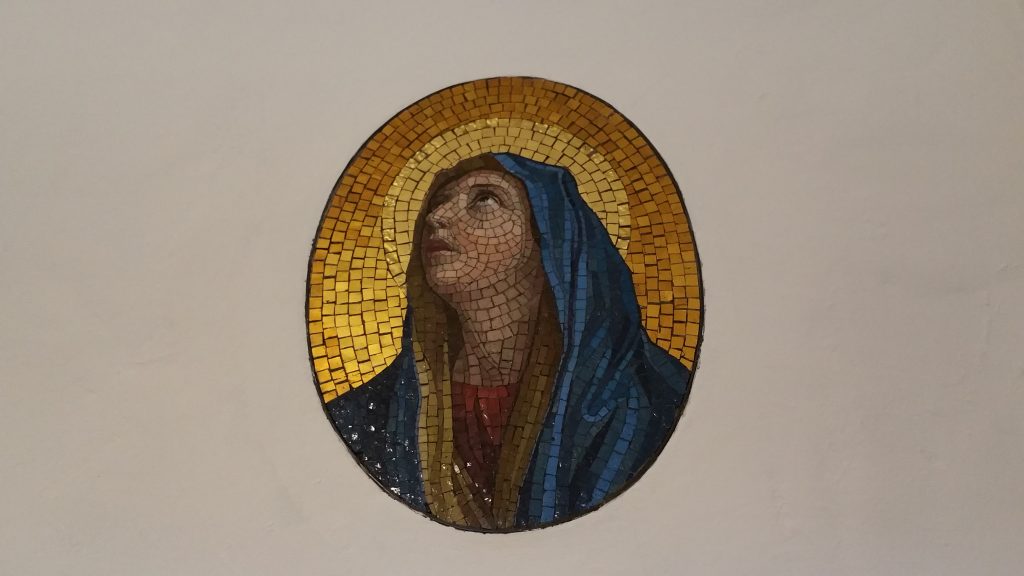
Speaking of, the Nooks and Crannies tour does give you access to several rooms that are not included in the standard or self-guided tour. You will see hidden spaces, such as the laundry, gym, servants quarters, boiler room, wine cellar, dormitory, dark room, and nursery. Certainly places most guests would not have visited; probably not even the family in some instances. It is however very popular with tour groups. I found the tour itself interesting, but with about 20 other visitors, the spaces were cramped, and pictures almost impossible.
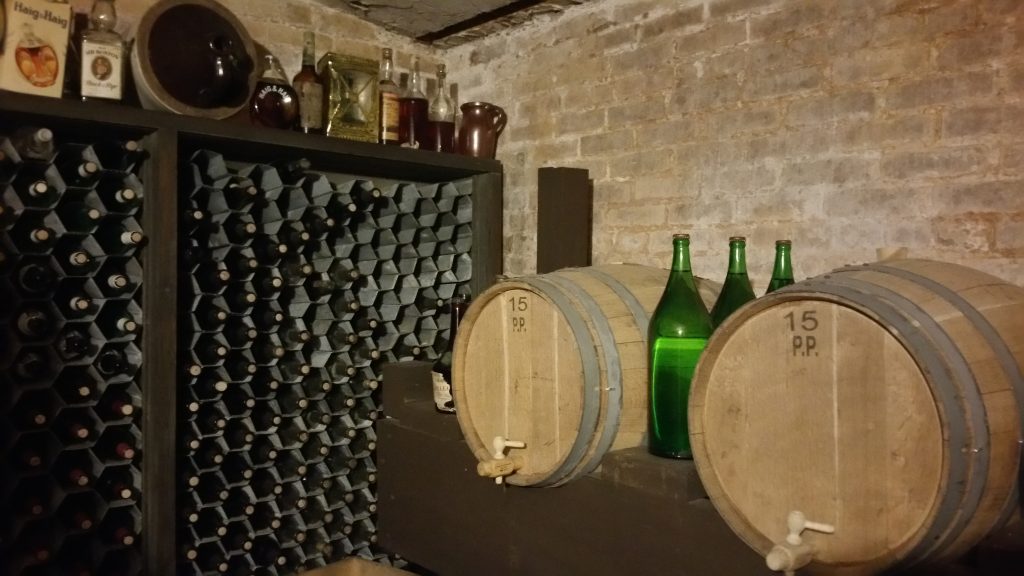
Before moving outside, it’s important to note that over 95% of the furnishings in the house are original, and belonged to the family. The Seiberling’s worked closely with interior designer Hugo Huber, who incorporated English antiques with more contemporary pieces found in New York. Many items were custom made for the home, or were pricey gifts from other fat cats, so it is fitting they would remain at Stan Hywet.
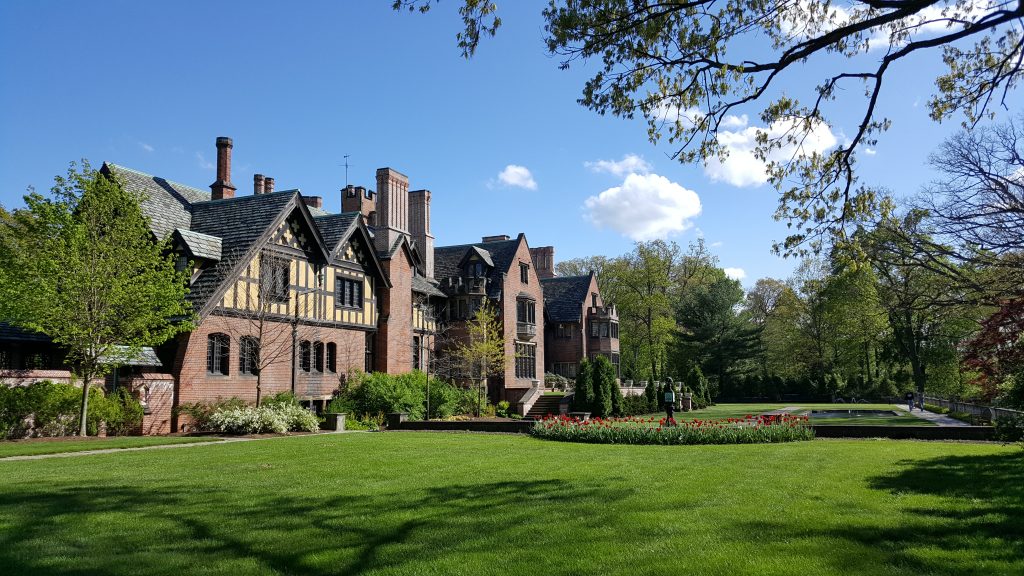
The landscape design at the estate is just about as impressive as the Manor House. Renowned Boston landscape architect Warren Manning was enlisted to not only situate the house on the property, but create a unified property design. With over 1500 acres, he had a lot of land to work with. He proceeded to create a series of magnificent gardens and vistas, each more impressive than the last, designed to function as outdoor rooms.
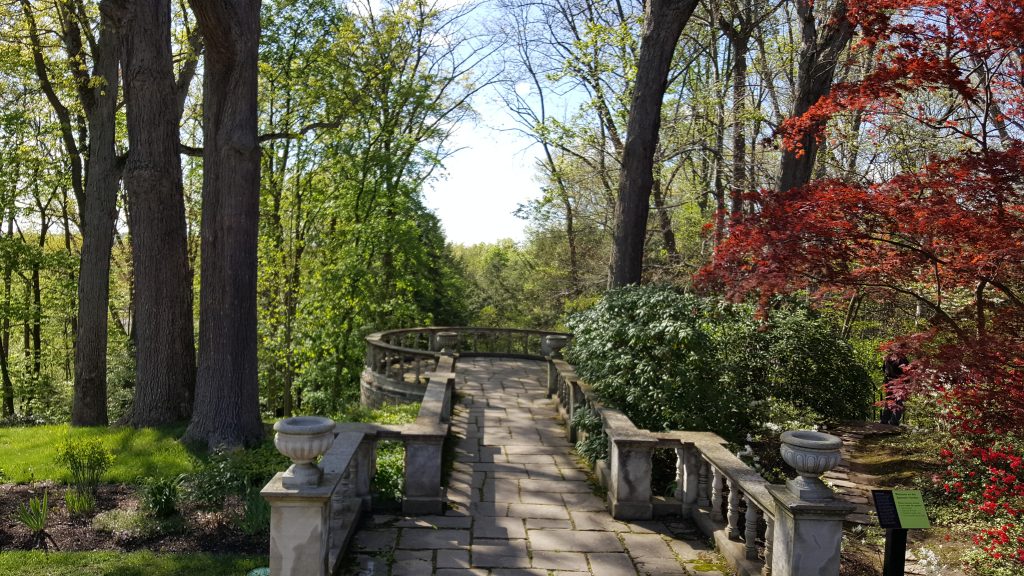
Just past the manicured lawn and the reflecting pool, Manning designed a sweeping overlook, with views of the Japanese garden below. To the right, a grand 550 foot Birch Tree Allée connects the Manor to two stone tea houses, situated to overlook a lagoon. The effect of the intertwined limbs is nothing short of magical.

You could easily spend all day exploring the estate grounds, which also include a greenhouse. The very Victorian Palm House was constructed in 1915, for $18,330, and included a separate space just for orchids. Sadly, the original building was destroyed in 1947, however a replacement was built in 2000 using the original historic designs.
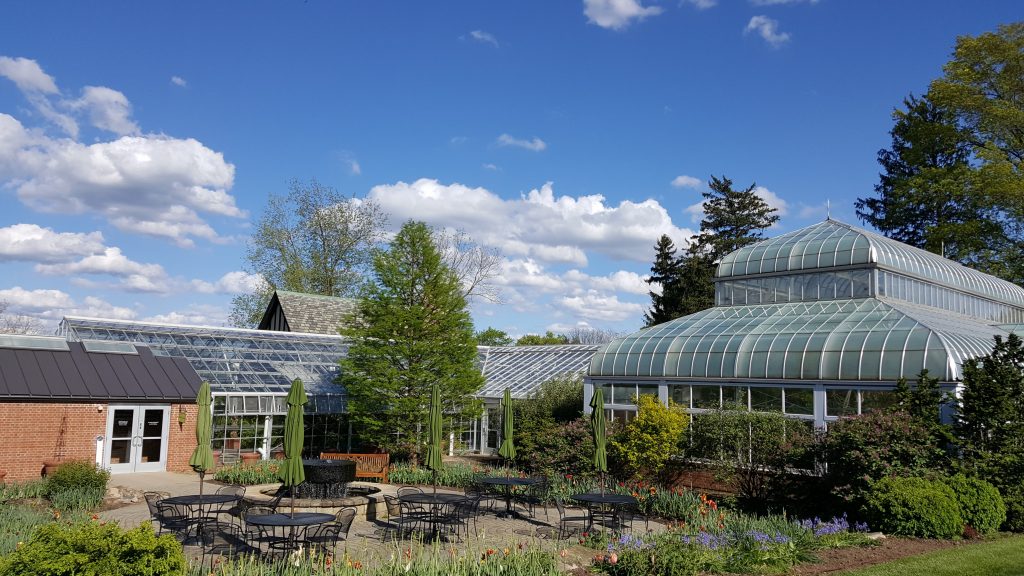
The formal English Garden, just off the Music Room, was redesigned by Ellen Biddle Shipman in 1928. Today, it is the only restored Shipman design open to the public. It is a serene walled space, complete with a lovely reflecting pool.
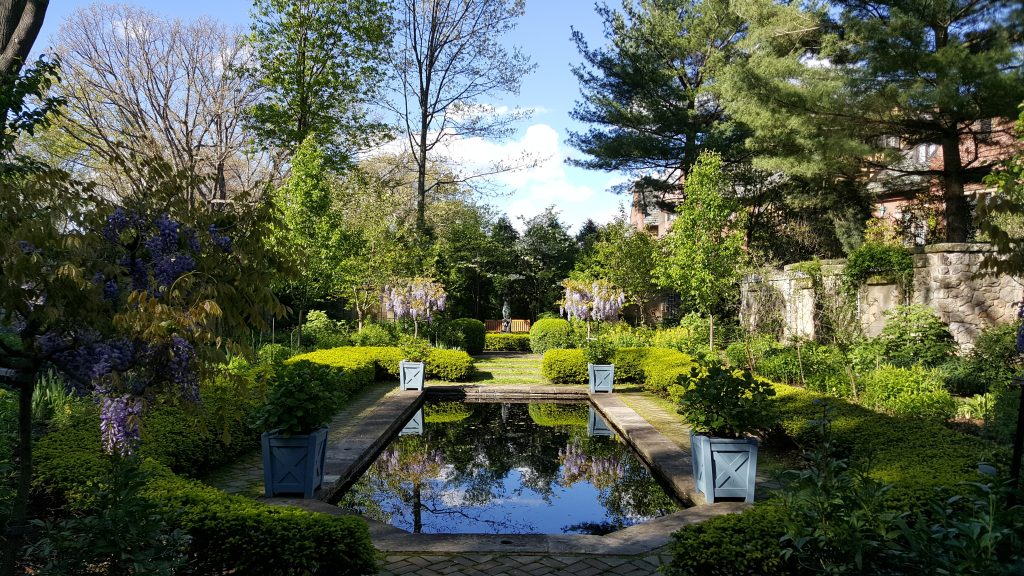
I have been lucky enough to visit the estate twice, once in early summer, once in the winter. Absolutely visit in the summer. Although the house is outstanding, the gardens complete the experience. While the house was beautifully decorated for Christmas, the garden was downright depressing, even with their elaborate light display.
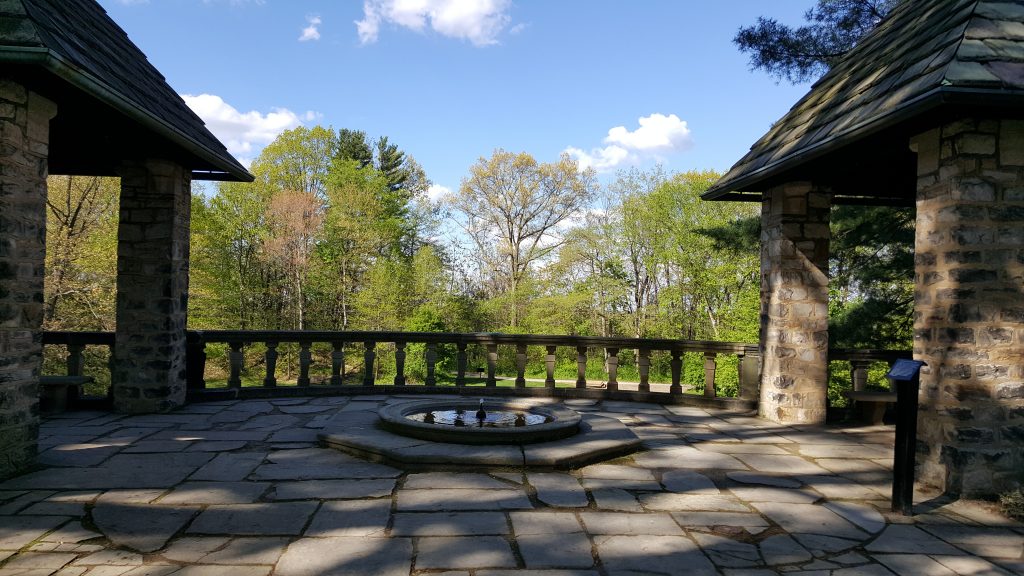
Gertrude Seiberling passed away in 1946, while taking a nap at Stan Hywet. Frank almost made it to 100; he passed away in 1955, just 5 years after retiring at 90. He clearly liked to stay busy. Far too large to keep as a private home, the six Seiberling children donated the house to a non-profit formed for the preservation of the estate. They have done an absolutely fabulous job maintaining the property. On par with the great estates of Long Island and Newport, Stan Hywet is not to be missed.




